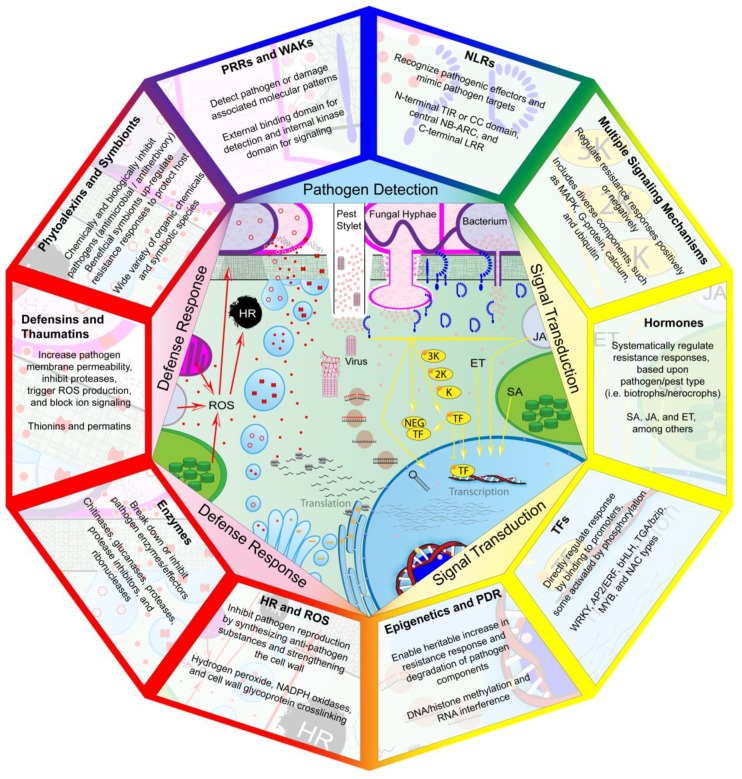Figure 1.
Components of plant disease resistance mechanisms involved in pathogen detection, signal transduction, and defense response (detection in the upper center and progressing around clockwise, ending in defense response in the upper left). Pathogenic elicitors (cell components or effectors) produced by bacteria, fungi, insects, nematodes, or viruses trigger plant receptors to initiate signaling cascades. Activated receptors (blue) then initiate one of many signal transduction pathways or directly act as transcription factors (TFs). Signal transduction pathways (yellow) include mitogen-activated protein kinase (MAPK) cascades, calcium ion signaling, hormone production, TF activity, and epigenetic regulation. These factors trigger the expression of genes associated with defense responses, such as those regulating the production of reactive oxygen species (ROS), antimicrobial enzymes, defensins, and phytoalexins. These defense-related compounds (red) actively inhibit pathogen reproduction or make further infection more difficult. Breakdown of pathogenic cell components by defense compounds leads to further release of receptor-triggering elicitors, increasing the resistance response. Multiple organelles are involved in defense response, including chloroplasts and peroxisomes for hormone production as well as the nucleus, endoplasmic reticulum, and Golgi apparatus for antimicrobial protein production. PRR: Pattern recognition receptors; WAK: wall-associated kinases; NLR: nucleotide-binding domains and leucine-rich repeats; PDR: pathogen-derived resistance; HR: hypersensitive response; TIR: N-terminal Toll/interleukin-1 receptor-like; CC: coiled-coil; SA: salicylic acid; JA: jasmonic acid; ET: ethylene.

